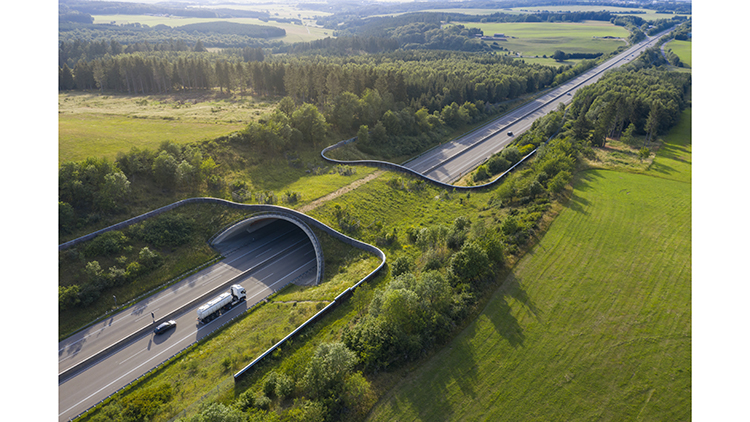
As the world celebrates Earth Day on April 21, let’s think about our impact on the environment. Do you take a highway or busy street to your home or school? Do you see animals trying to cross these roads? As humans build more homes and businesses, we reduce animal habitats. We build roads that disrupt migration routes. Engineers have been restoring animal pathways and migration routes with wildlife crossings and tunnels.
This isn’t a new idea, but it is becoming more popular. In Massachusetts, salamanders can safely cross Henry Street thanks to a tunnel built more than 30 years ago. It is most likely one of the first amphibian crossings in North America. The tunnel was built in 1987 and salamanders still use it every year during migration.
Wildlife crossings in Montana, Washington, Utah, and Nevada
are covered in grass and trees. They span busy highways and allow for deer,
bobcats, and bears to safely cross highways.
Busy highways aren’t the only threat to animals. Dams built by humans have made
it hard or impossible for salmon to lay eggs each year. This has reduced the
salmon population. A salmon cannon was created to fix this problem on the
Columbia River. A salmon cannon is just what it sounds like. A special plastic
tube that is slick on the inside—and features water misters so the salmon can
breathe—pushes the fish 20 miles per hour through the tube and over a dam!
Each year on Christmas Island, millions of red crabs leave the forest and head for the beach to mate. Bridges have been built to keep the crabs safe during their trip to and from the sea. It’s a sight to sea!
In Victoria, Australia a rope bridge was placed over a busy highway so squirrel gliders can cross a highway that divides their mating grounds. Cockatoos and possums have started using the bridge, too!
What Can You Do? This Earth Day, take a look around you. Is there something you could do to make life a little safer for the animals in your neighborhood?
Reading Response Click on the links to respond to your reading. Print out the response page or upload it to your classroom site.
Photo Credit: Jorg Greuel/Photodisc/Getty Images



